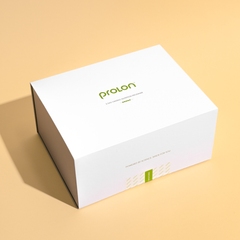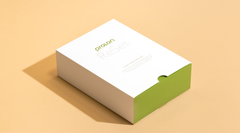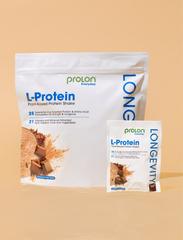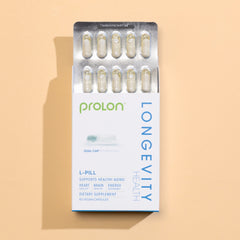
8 of the Best Prebiotic Foods to Add to Your Diet
The link between gut health and overall wellness extends beyond digestion to impact immunity, brain function, the nervous system, and metabolic health. While probiotics introduce “good” bacteria into the gut, prebiotics are also needed; they act as fuel to encourage the growth and activity of these bacteria.
Prebiotic and probiotic supplements such as L-Biome are an excellent way to support a thriving gut microbiome, but it is optimal to accompany them with a healthy diet, too. There are plenty of foods that serve as excellent sources of prebiotics and can be easily added to your meals. Read on.
What Is a Prebiotic?
Prebiotics supply the gut microbiota with essential food. They’re a type of carbohydrate (fiber) produced by plants, and cannot be broken down in the gut; instead, the healthy bacteria in the gut use prebiotic fibers for nourishment.
When prebiotics are ingested, gut microorganisms produce short-chain fatty acids — like butyrate, acetate, and propionate — which support the cells in the gut lining. This maintains overall gut health and encourages better digestion.
Prebiotics vs. Probiotics
Probiotics are living organisms inside the gut, and they’re essential for digestive health. They’re also linked with other positive outcomes, like skin and brain health, and prebiotics act as their “food.”
When you take a probiotic supplement or add probiotics naturally into your diet, you’re essentially sending in reinforcements to replenish the levels of bacteria naturally occurring in your digestive tract. Prebiotics are needed to keep those living bacteria alive. Probiotics and prebiotics work together to support overall digestive health and a thriving gut microbiome.
Types of Prebiotics
There are several types of prebiotics:
- Fructo-oligosaccharides (FOS): Naturally low in sugar but with a sweet taste, these types of prebiotics are useful as a sugar substitute and can also support the immune system and digestive tract.
- Galacto-oligosaccharides (GOS): Found in beans, some root vegetables, and dairy products, these types of prebiotics are attached to glucose and/or lactose sugars. GOS are bifidogenic, which means they can encourage healthy bacteria levels in the stomach.
- Resistant Starch: Similar to soluble fiber, these starches pass through the digestive system without being broken down, making them useful dietary fiber for the gut. Resistant starches are also useful in supporting the body’s defenses against constipation.
- Inulin: Inulin works similarly to FOS but differs in terms of chemical structure. It is found both readily available in many foods and in powdered form. It has biogenic effects, which means it is particularly useful in helping grow bifidobacteria in the gut.
What Are 8 of the Best Prebiotic Foods To Add to Your Diet?
You don’t have to look far to find food sources that are rich in prebiotic fibers and may support a healthy gut microbiome. Here are eight ways to incorporate prebiotics into your daily routine:
1. Chicory Root
Chicory root, a member of the dandelion family, is often used to brew chicory coffee, a popular coffee alternative in the Bayou region of the U.S. Rich in inulin, a type of prebiotic fiber, it provides about 1.5 grams of fiber per serving, making it a great choice for gut health. Additionally, chicory root may help support healthy blood sugar levels.
You can find chicory root in Prolon’s L-Biome. This once-per-day capsule combines probiotics, prebiotics, DHA, and a time-release capsule to support a healthy gut environment. Chicory root is also present in Prolon’s L-Protein and Fasting Shakes.
2. Jerusalem Artichokes
In addition to containing inulin, Jerusalem artichokes are an excellent source of potassium, and are high in thiamin and vitamin B-1.Enjoy Jerusalem artichokes either raw or cooked.
3. Dandelion Greens
Dandelion tea is often made using both the plant's flowers and its nutrient-rich greens or roots. The greens and roots are especially high in inulin, a powerful prebiotic that promotes gut health, as well as antioxidants that help protect the body from oxidative stress.
4. Leeks
A member of the onion and garlic family, these mild-tasting veggies commonly used in soup and stews are low in calories and less nutrient-dense than some other inulin-rich foods. In addition to inulin, they contain vitamin K, which is beneficial for blood clotting.
5. Legumes and Lentils
Legumes and lentils contain plenty of prebiotic carbohydrates, and they’re a great source of protein, too. In all the Longevity Zones in the world (communities with high populations of those who live healthily into their 100’s), beans, legumes, and lentils are dietary staples that are consumed nearly every day.
6. Apples
An apple a day may actually keep your gastroenterologist away. Apples contain pectin, a soluble fiber - which, while it isn’t actually a prebiotic, does have prebiotic effects. Pectin has the potential to increase butyrate, a short-chain fatty acid that is beneficial for gut health.
7. Jicama
This root vegetable originally hails from Mexico. With a potato's starchiness combined with a pear's subtle sweetness, it is also a great source of inulin. Adding it to your diet can increase both your prebiotic and antioxidant intake.
8. Whole Grains
Did you know that grains are the largest source of prebiotic fibers in the Western diet? Buckwheat, for example, contains beta-glucans contained in its cell walls.
What Are the Health Benefits of Prebiotic Foods?
Healthy gut flora is crucial for overall health, and prebiotics can increase the chance of the flora’s survival, thereby potentially supporting:
- The health of your intestines. When your intestines are healthy, they enable better nutrient absorption from the foods you eat, leading to a stronger immune system and improved digestion.
- A healthy metabolism. As a type of fiber, prebiotics help promote a feeling of fullness, which can reduce daily caloric intake and curb unnecessary snacking between meals. This may also support weight loss efforts.
- Overall health by providing essential nutrients. Most prebiotic-rich foods contain micronutrients (vitamins and minerals) and macronutrients (healthy fats, protein, and complex carbohydrates), supporting a well-rounded diet.
Are There Side Effects of Prebiotic Foods?
For some, prebiotics may cause bloating, excess gas, and cramping. You can lessen these side effects by slowly introducing prebiotic foods into your diet over time, allowing your gut to adjust to the increase in fiber.
If you follow a FODMAP (fermentable oligosaccharides, disaccharides, monosaccharides, and polyols) diet, or have irritable bowel syndrome, speak to your healthcare provider prior to beginning a prebiotic supplement or before increasing your prebiotic food intake.
Feed the Gut Flora
Feeding the healthy bacteria in your gut is essential for maintaining numerous organs and systems in your body. Preclinical trials in mice suggest that Fasting Mimicking Diets (FMD) may benefit gut health. Real users have reported reduced bloating, and data shows increased diversity in the gut microbiome, and enhanced growth of beneficial bifidobacteria and lactobacilli.
Prolon’s L-Biome supplement is designed to sustain this post-fast healthy microbiome with a high concentration of specific probiotics, DHA, and prebiotics carried over from the FMD. It uses advanced dual-cap technology for optimal probiotic absorption, promoting gut health and overall wellness.
Incorporating three Prolon cycles yearly and L-Biome and prebiotic-rich foods daily into your routine can help support a healthy gut and contribute to healthy aging. Try it today—there's no better time to invest in your well-being!
- Exploring the possible relationship between skin microbiome and brain cognitive functions: a pilot EEG study | Scientific Reports
- Prebiotics: Definition, Types, Sources, Mechanisms, and Clinical Applications - PMC.
- Does Inulin Help Improve Gut Health?
- The bifidogenic effect of inulin and oligofructose and its consequences for gut health|PubMed
- Food Guidelines | Blue Zones
- What Are Prebiotics? A Detailed Look At Prebiotic Foods and Fiber | Diet vs Disease
- FODMAP Diet: What You Need to Know | Johns Hopkins Medicine













